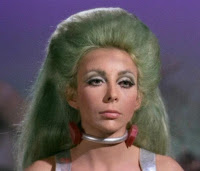One of the great myths in the history of the cinema is that late nineteenth-century audiences, upon seeing the Lumière Brothers’ film L’arrivée d'un train en gare de La Ciotat (The Arrival of a Train at La Ciotat Station) (1896), ran in terror because they confused the moving image of a train with a real train coming directly at them. Although it never happened, the myth persists, in various forms, to this day. Apparently, the myth of the Lumière Brothers’ screening had circulated widely enough so that within a few years it was re-created in a film directed by Edwin S. Porter, Uncle Josh at the Moving Picture Show (1902), in which a country yokel, or rube, Uncle Josh, dives for safety when he sees on the movie screen the image of a train speeding toward him.
When it comes to the cinema, it seems that at least some audience members are always running in terror from something. Writing about the preview of Freaks in early 1932, Melvin E. Matthews, Jr. cites Hollywood art director Merrill Pye, who recalled: “Halfway through the preview [of Freaks], a lot of people got up and ran out. They didn’t walk out. They ran out.” (Fear Itself: Horror on Screen and in Reality During the Depression and World War II. McFarland, 2009.) Thus, by the early 1930s, the myth popularized by “Uncle Josh at the moving picture show” had become less a matter of history than a form of “common knowledge,” defined by Robert B. Ray as an “evolving assemblage of myths, half-truths, lies, and approximations” (The ABCs of Classic Hollywood, p. 296).
Too often, “common knowledge” passes as film history. The notion that the appearance of sideshow attractions in a moving picture show “shocked” audiences so profoundly that they fled the theater appeals to the contemporary cognoscenti who believe they are far more sophisticated movie viewers than the rubes who emerged during the Uncle Josh era. But audiences at the time were not as naïve as the above anecdote about Freaks suggests. As Robert Bogdan has shown, freak shows had been a popular form of entertainment across the United States since 1840, in towns both big and small. Dwarfs, giants, Siamese twins, bearded ladies, “wild men,” fire eaters, microcephalics (“pinheads,” a word that peaked in usage from 1890 to 1940) and other sideshow attractions had been widely known for almost a hundred years before Tod Browning made Freaks. Moreover, the “geek,” or “sideshow freak,” was used as a central image in William Lindsay Gresham’s novel Nightmare Alley, published in 1946, just over a decade after the release of Freaks. The film adaptation of Gresham’s novel (1947) is now considered a classic.
In addition, many (though certainly not all) of the performers in Freaks were known in Hollywood and to popular audiences as well by way of carnival attractions such as Coney Island. For instance, the dwarf siblings who appear in Freaks, Harry and Daisy Earles (actual names Harry and Daisy Doll, members of the German-born Doll family) had been in California since the early 1920s. Harry Doll (“Hans”) had appeared in Tod Browning’s The Unholy Three in 1925, and all four of the Doll siblings would appear a few years later as Munchkins in The Wizard of Oz (1939). Angelo Rossitto (“Angeleno”) had first appeared on screen in the John Barrymore silent, The Beloved Rogue (1927), and the conjoined twin sisters Daisy and Violet Hilton (“Siamese twins”), born in Britain in 1908, were exhibited as children in Europe and were widely known in the United States by the 1920s. The timid, affectionate, microcephalic Schlitze had been employed by the Ringling Bros. and Barnum & Bailey circus since the early 1920s, and had made his film debut in Earle C. Kenton’s circus sideshow melodrama, The Sideshow(1928), starring Marie Provost, Ralph Graves, and “Little Billy” Rhodes. (“Little Billy” Rhodes would later appear in the Western spoof, The Terror of Tiny Town (1938), as well as The Wizard of Oz.) Prince Randian, the “living torso,” had lived in the United States since 1889, and was a popular Coney Island and circus attraction for decades.
The word “attraction,” used to refer to something “which draws a crowd, interesting or amusing exhibition,” dates from 1829. As Tom Gunning points out in his study of “the cinema of attractions,” the source of the word “attraction” is significant precisely because it is “a term of the fairground,” or carnival. While Gunning’s primary interest is in the roots of early cinema, he also observes, “The relation between films and the emergence of the great amusement parks, such as Coney Island, at the turn of the century provides rich ground for rethinking the roots of early cinema.” (“The Cinema of Attraction[s]: Early Film, Its Spectator and the Avant-Garde,” 383) I would suggest that the relation of films and the great amusement parks also provides a productive way of reimagining Freaks, and provides a way to get beyond the common knowledge perception of the film as a sort of simple épater le bourgeois. Born in 1880, director Tod Browning’s early life coincides with the invention of the cinema and its rise as a popular entertainment, even as his later life as a carnival barker coincides with the rise of the major amusement parks. A critical reappraisal would have to begin with the assumption that the cinema is a theatrical form of exhibition rather than merely a form of voyeurism.


















